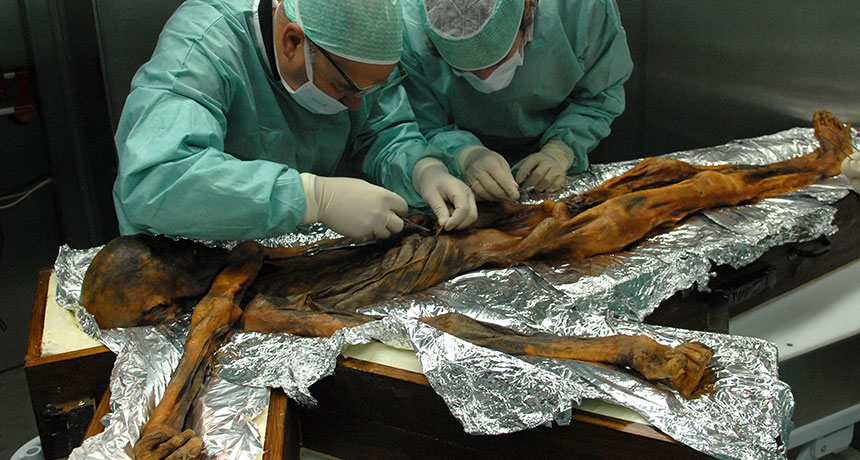Ötzi loaded up on fatty food before he died
New analysis fills in details of the famous Iceman mummy’s last meal

GUT FEELING Ötzi’s stomach was covered in fungi, but researchers still managed to reveal new details about the Iceman’s last meal.
M. Samadelli/Eurac Research and South Tyrol Museum of Archaeology ©